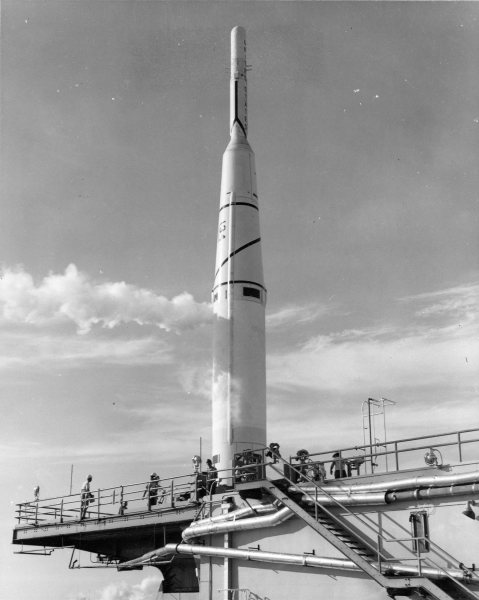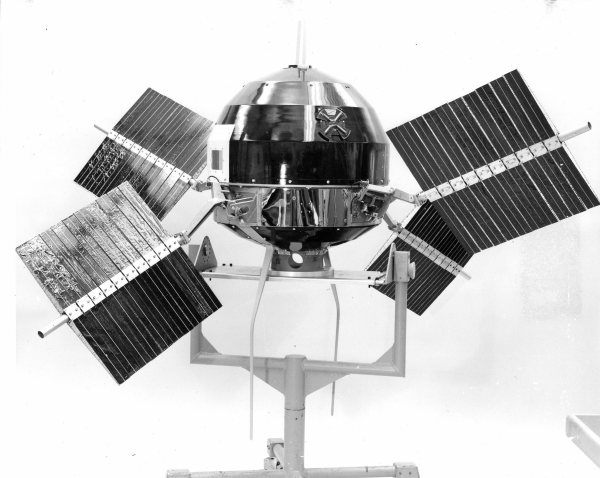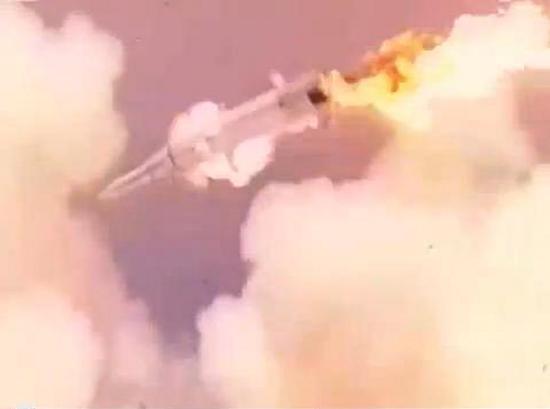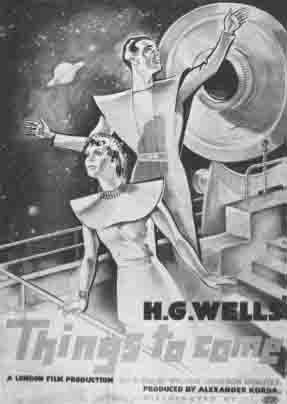We are now in the second phase of the Space Race.
Decades from now, people will debate over the exact date of the turning point. Some will argue that it started when countries started sending rockets to the moon, leaving the shackles of Earth's orbit. Others will say that spaceflight didn't leave its infancy until humans had been sent into space.
But, I contend that a whole new ballgame opened up yesterday with the launching of Explorer VI.

This latest satellite is, in some ways, just an evolutionary step. Its payload of experiments is little different from the slew of instruments carried by its predecessors, the Air Force Pioneers. It's got geiger tubes and scintillators for measuring cosmic rays, magnetometers for mapping Earth's magnetic fields, a micrometeroid detector, and a crude TV camera–all devices that went up on the ill-fated Pioneer II.
But, the probe also has an impressive array of solar cells affixed to four paddle wheels that make Explorer look like a little windmill. Moreover, the satellite is equipped with two communications systems. One of them is analog, like those employed by all previous satellites, in which information is communicated by modulating the amplitude and/or frequency of transmissions, like your AM or newfangled FM radio. The other is digital using nothing but streams of ones and zeroes. This method is far less prone to error and noise, and it uses bandwidth more efficienctly, requiring less power.
A digital system is above and beyond the needs of an orbital probe, so why bother including it? Because Explorer VI is a test-bed. A spacecraft very much like it will be launched to Venus some time in the near future, and it will need a digital system to communicate from that vast 25 million mile distance.
Until Explorer VI, we were launching little experiment packages. Now, we have a bonafide orbital scientific and engineering laboratory in space, the results of which will revolutionize where spaceflight goes from here.

A natural extension of this is that I don't have this satellite's results for you yet. Unlike my other columns, where I've been able to sum up a mission and its findings generally in one article, Explorer VI is going to collect mountains of data, and it will take time to sort it out.
So stay tuned!
P.S. The October 1959 issue of Galaxy has come out. I'm half-way through and will be telling you all about it next week. Come join me in my journey (but try not to send me letters about it until I publish the articles).
(Confused? Click here for an explanation as to what's really going on)
This entry was originally posted at Dreamwidth, where it has comments. Please comment here or there.


